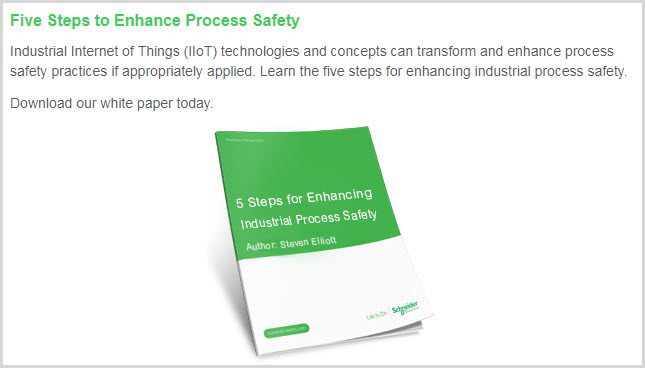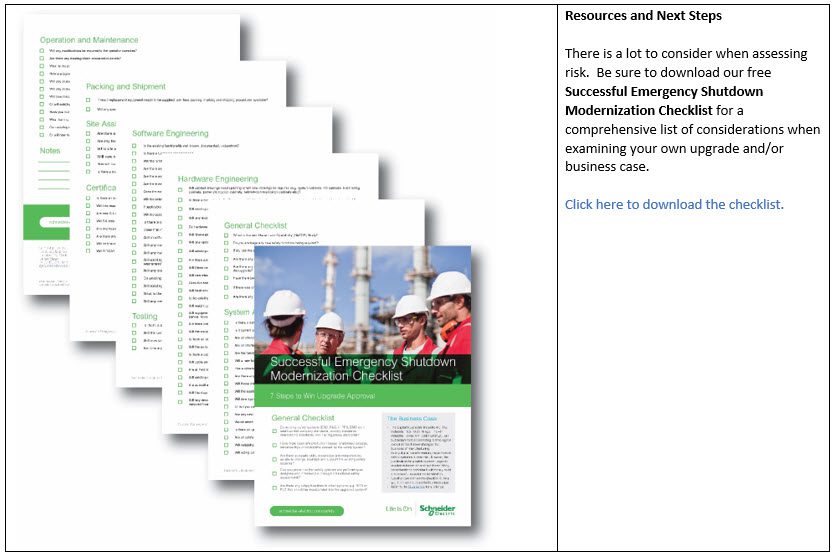
The Digital Revolution. Industry 4.0. The Industrial Internet of Things. The 4th Industrial Revolution. Call it what you will but today’s fast-accelerating technological evolution has forever changed the business of manufacturing. In any digital transformation, investment in safety instrumented systems is essential. However, the justification for a safety system upgrade is seldom based on a single factor.
Many considerations combine to ultimately build a successful case for modernization. I once presented a manager with two choices: Upgrade the legacy safety system or wait until something happens and go out of business. I know that sounds a bit extreme, but it’s not always possible to restart operations after an outage!
This post will discuss the last (but certainly not the least!) important step in building an effective business justification. In any business, everybody is competing for the same limited budget and resources. How do you create a winning business case, and more importantly, secure the funding to upgrade your safety instrumented systems? Let’s assume you’ve done your homework:
- You’ve developed the ideal funding approach (see step 1).
- You’ve built consensus with key stakeholders (see step 2).
- You’ve decided on the best timing (see step 3).
- You’ve identified potential risks and compensating measures (see step 4).
- You’ve defined a winning return on investment (see step 5).
- You’ve focused on the value and benefits to the organization (see step 6).
Now comes the all-important meeting to present the case. It’s time to formulate your pitch to convince key stakeholders, decision makers and budget holders to approve the money and resources you need for a successful safety instrumented system modernization project.
Present like a Pro
Never has a pitch been so important. You will either win or lose. It matters. So, what should you do to put yourself and your request in the strongest winning position?
Think like a professional. Just because it’s your own finance department holding the money, it shouldn’t be any different than if you were pitching to an investor. Make sure you understand their position and be clear about “what’s in it for them.” After all, they have the money that you want, and you must win their hearts and minds for them to hand the money over!
Be Succinct
The less time your pitch takes, the better! The more concise you can be, the more effective you will be. Now is not the time for saturating the audience with “more,” but it is certainly the time to be more meaningful, more relevant, and more specific.
Providing an over-abundance of information only jeopardizes clarity and may obscure your major points. Make sure you give yourself time to arrive at your key arguments and avoid the temptation to get side tracked by minutiae. Less is more. Keep it brief; ideally no more than 10 minutes. That is easy to say but difficult to do, so here are a couple of key tips:
TIPS: Always ask yourself “So what?”
If you create a list (of anything), rank it with the most important at the top so you start with the most essential and impactful topics.
The good news is, if the stakeholders are really interested, they will ask questions. If not, then you will have saved them (and yourself) time!
Tell a Story
How do you make your pitch stand out and “sticky?” One scientifically proven way to capture a listener’s attention and hold it is to tell stories. Don’t we all still remember the stories we were told as kids?
Everyone loves a good story, even those that are data driven! Most stories have a good guy and a bad guy. The morale of the story is “good overcomes bad,” so use the story to show how the good (the upside / benefits) defeat the bad enemy (obsolescence, regulations, lack of expertise, etc.)
TIPS: Practice, practice and practice! Carefully rehearse the first two minutes when you will probably be most nervous or uncomfortable.
Start strong. Decisions are often made in the first 2-3 minutes when the audience often decides to invest their time and carry on listening or to “check-out,”
Craft your pitch as a compelling story and your audience will want to keep listening.
Use a Structure
How many times have you listened to a presentation where the central idea was unclear? A lack of structure only raises more questions than answers. Make sure you construct a clear, logical message leaving no room for ambiguity or misinterpretation. Don’t leave the stakeholder trying to work out what you envisioned!
Stay Focused
Time is a precious commodity. If you respect an audience’s time, it’s often interpreted as an ability to also respect their money. Develop an obsessive focus on the core elements of the pitch. Since you’ve done your homework (steps 1-6), you know exactly where to focus.
TIPS: Stick to the script. If you start to deviate, you often end up rambling, going off on tangents, or running into traps from which there is no return.
Be careful not to drone on about technology. Get to the good stuff¾the business impact and the money!
Explain exactly what is different. If you are not providing anything different from the usual “blah, blah, blah” then don’t even go to the meeting!
Demonstrate Passion
Show genuine enthusiasm and passion for the project. If you don’t believe in your model, then who will? If the stakeholders are interested, they will ask more questions. Be ready to elaborate and don’t lose your passion for the discussion just because of a difficult question!
We often get so close to the project, we don’t see it from the other side of the table. We assume the stakeholders will fall head over heels in love with our proposal (because we did). Afterall, what’s not to love about modernizing safety instrumented systems?! Most of the time you will face a barrage of questions, geared to finding the flaws or gaps in your argument.
TIP: Prior to the pitch, anticipate the questions and work out how you respond before the meeting, not during it!
Prepare an Impromptu Pitch
Some of the most significant meetings are the unplanned ones! As someone who spends a lot of time traversing through airports, I find it amazing how many people you bump into. Always be ready for a quick pitch at the drop of a hat.
I have never forgotten the client who once asked me:
“Steve, in 2 minutes or less, can you explain:
- what it is,
- what it will do for me, and
- why should I care? because I must sell this to my boss!”
I tend to keep this in mind whenever I have to give an impromptu pitch. It helps to be prepared and have already thought it through.
Be Persistent
The difference between those who win and those who lose often comes down to one thing: persistence. Remember, all it takes is one person to believe in you. Don’t let someone who doesn’t get your idea stop you in your tracks. Keep moving forward.
Now go out and making that winning pitch!
Get to It
I hope that you have found this series of blogs informative and, maybe, even a little inspiring!
Formulating a winning approval strategy to upgrade your safety instrumented systems is never easy. Hopefully this series has triggered some thoughts and ideas to help you succeed.
At the end of the day, there is no easy way. As the old saying goes, “failing to plan is planning to fail.” So, have a plan. The earlier you start, the better. Use some of the hints and tips covered in this series to confidently build your chances of success.
While I have tried to share some of my personal experiences and insights, I am sure that there are many other examples or factors not covered in this series. If you would like to share your experience, lessons learned, or any other hints and tips that will help others be successful, I would love to hear from you!
Be sure to check out the entire blog series to help you win that all-important approval to upgrade your safety instrumented system.
Modernizing Safety Instrumented Systems: 7 Steps to Approval
Modernizing Safety Instrumented Systems: Step 1 Funding Approach
Modernizing Safety Instrumented Systems: Step 2 Build Consensus
Modernizing Safety Instrumented Systems Step 3 Decide When
Modernizing Safety Instrumented Systems Step 4 Use a Risk Approach
Modernizing Safety Instrumented Systems Step 5 Define a Winning ROI
Modernizing Safety Instrumented Systems: Step 6 Focus on the Benefits
Modernizing Safety Instrumented Systems: Step 7 Pitch to Win

For further reading:
Download IIoT for Process Safety White Paper





